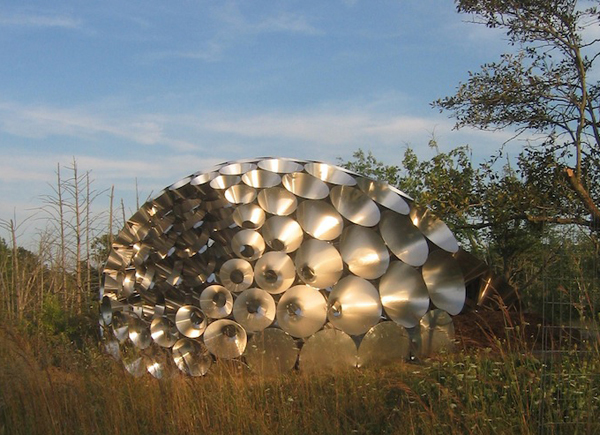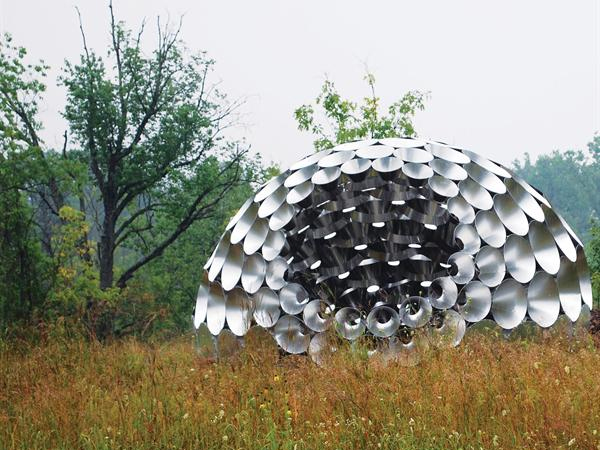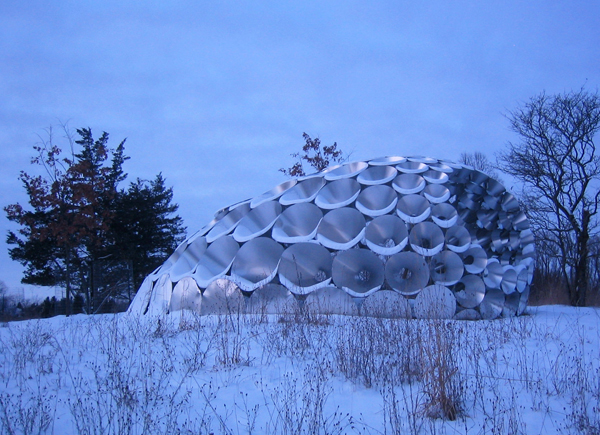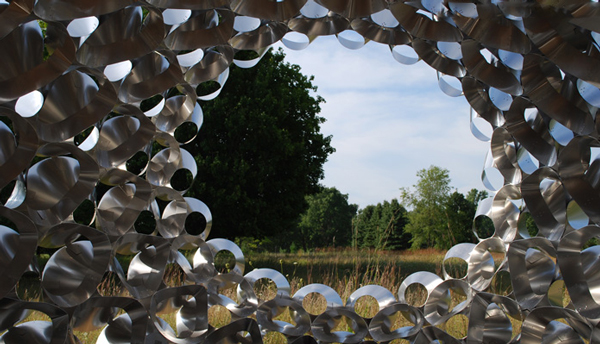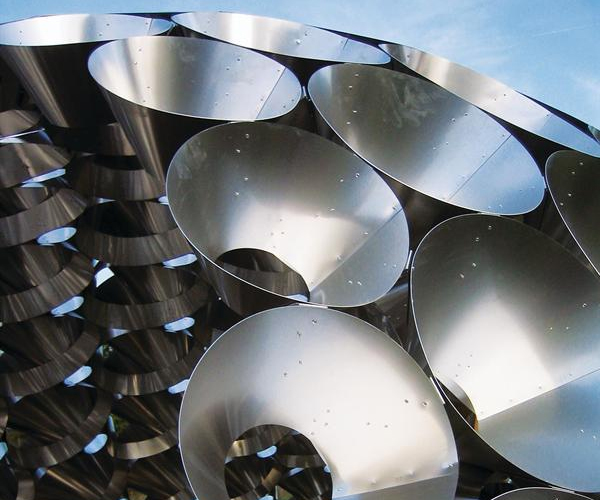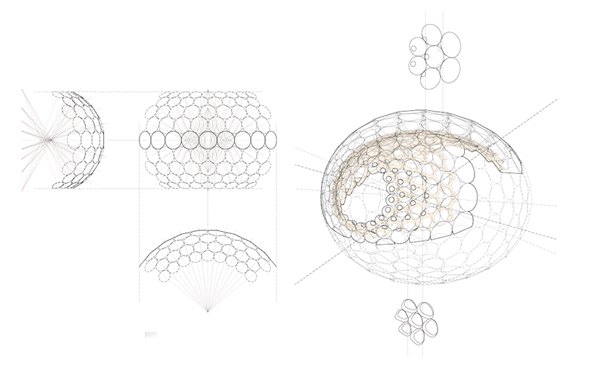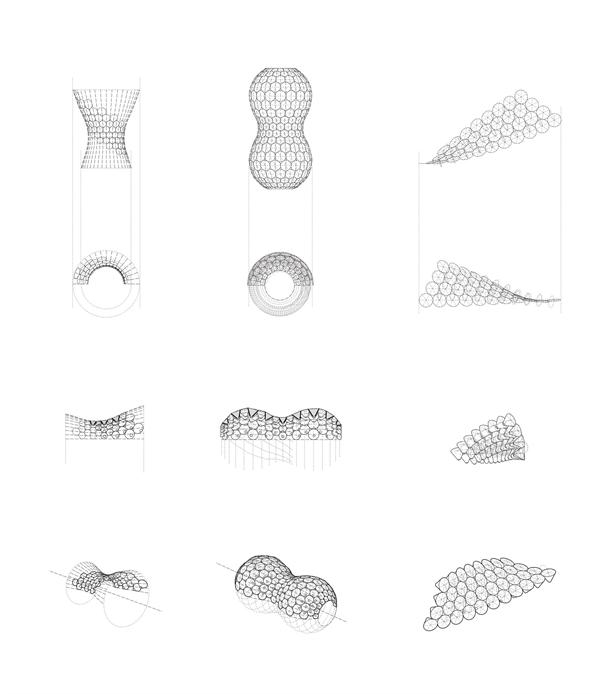The cellular Shadow Pavilion is the result of simple materials lightly manipulated and connected to dramatic effect. More than one hundred aluminum sheets, laser cut and rolled into cones of various sizes are attached in pre-assembled clusters from offsite. The lowest row buried in the soil of Matthaei Botanical Gardens, Ann Arbor, Michigan anchors the project. PLY Architecture developed the self supporting structure using software modeling to determine shadow patterns, material efficiencies, geometric tethering and assembly.
The focus of meticulous assembly disperses as the pavilion becomes land art, both reflecting and manipulating its surroundings. The design strategy is based on phyllotaxis, the pattern which forms on many flowers and cacti as successive layers of petals, leaves or nodules grow to form a spiral. The interior’s funneled light and water create a micro-environment inside. The highly reflective surfaces provide the pavilion with a buoyancy in the ambient light conditions, abstracting the sky and planting it on earth. Along with light and water the cones amplify ambient sounds to the interior, adding to the sensory experience for visitors.
A type of biomimicry for the senses, the pavilion becomes a gesture of how geometry and simple forms can come together to create complex environments that connect intimately with the larger world.

